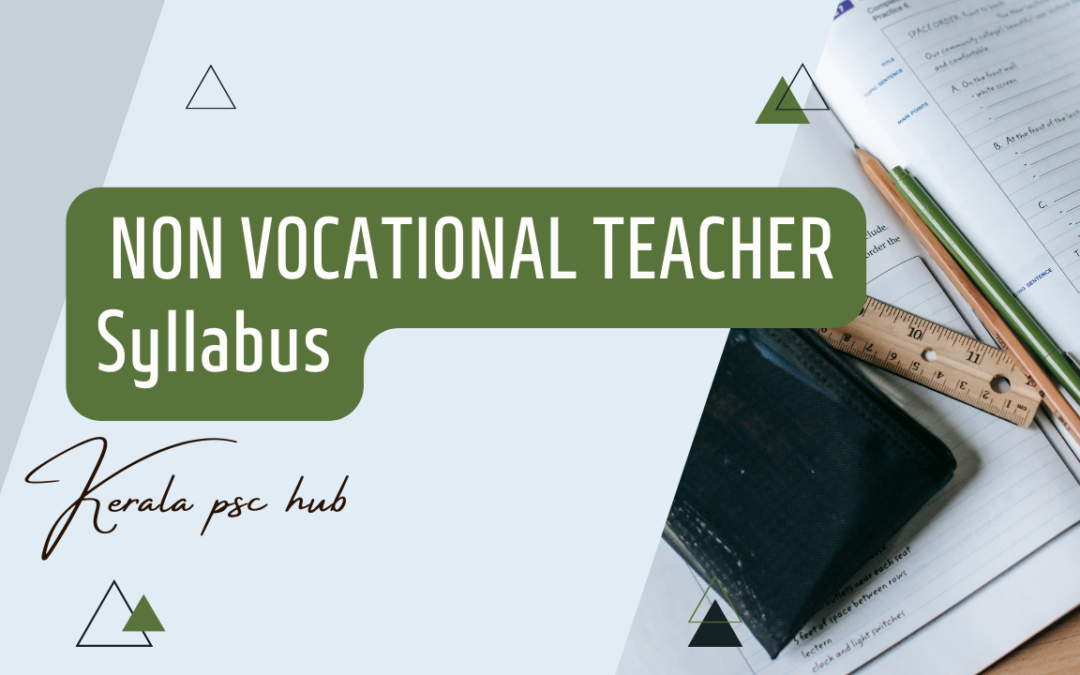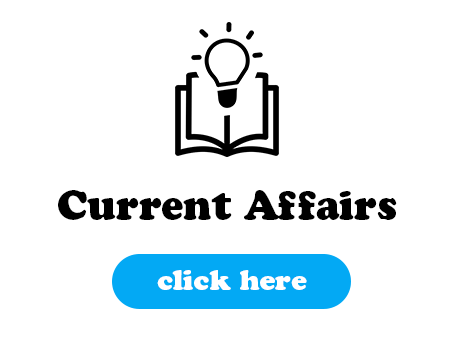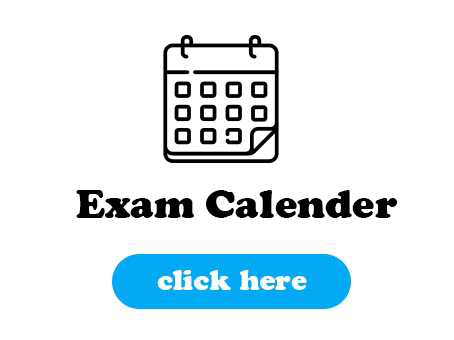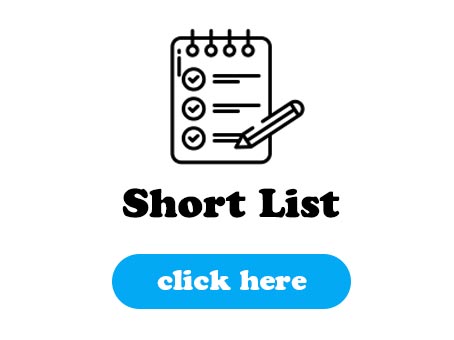Kerala PSC NON VOCATIONAL TEACHER syllabus 2023 | PDF ☟☟
Kerala PSC NON VOCATIONAL TEACHER – syllabus 2023
Part I COMMERCE (PG Level) (25 Marks)
MACRO & MICRO ECONOMICS
Meaning-definition-fiscal policy-functions-instruments-importance-monetary policy-tools-Theory of employment and output- classical theory-laissez faire-quantity theory-Keynesian theory-liquidity preference theory-ISLM analysis-inflation and unemployment-types-Theories-Money supply-tools money demand theories-portfolio and cash balance-Balance of payment and exchange rates –internal and external balance-international capital flows-Exchange rates-fixed and flexible-Economic Models consumer preferences-income and substitution effects-production function-Cob Douglas-Economies of scale-equilibrium of firm-perfect and imperfect competition-Price discrimination & product differentiation-pricing strategies-pricing theory.. [ 4 marks]
DEVELOPMENT & PUBLIC ECONOMICS
Development Economics-indicators of development-HDI-poverty- index-theories of economic growth Adam smith-Ricardo-Marx-Schumpeter-Growth models-Harrod-Domar, Joan Robinson, Solow, Kaldor Public goods- Merit good, Social good, Club good-Public Revenue-Sources- Tax and Non tax Sources Merits and demerits of Direct Tax and Indirect tax- VAT-MODE VAT –CENVAT-GST-Progressive – Proportional –Regressive-digressive taxes- incidence and impact of tax –Public expenditure-types canons-theories-effects of public expenditure-public debt-meaning-objectives-types-internal vs external
[3 marks]
INDIAN & INTERNATIONAL ECONOMICS
Economic Growth in India-structure & pattern-GDP-National Income-Measurement and methodology Industrial policy 1991-Privatization and divestment-India’s foreign trade –composition and direction economic reforms-WTO & India-second generation reforms-FRBM Act-NPAs in banking sector Monetary policy after economic reforms International trade and financial institutions-IMF-IBRD-WTO EMU-BRICS-Comparative advantage- theories-Free Trade and Protection-Tariff and non-tariff barriers forms of economic integration-FTA [2 marks]
BASIC STATISTICS
Statistics-meaning-definition-functions-data –tools of presentation-diagrams-graph-tables-measures of central tendency-measures of dispersion-probability theorems-classical-relative frequency-axioms – random variables-theoretical probability distributions-Binomial Poisson and Normal distributions sampling-methods-sampling distribution-standard error-hypothesis testing-steps-type of errors-parametric and non-parametric tests.
[ 3 marks]
MANAGEMENT
Management- Features- schools of Thought- Management -Arts or Science?- Profession management functions- Planning-organizing-staffing-directing and controlling-emerging concepts in management- Kaizen-TQM-TPM-MIS-ISO-Corporate social responsibility.
[ 3 marks]
COOPERATIVE THEORY & LAWS
Cooperation-Meaning-Definition-Features-Principles-Cooperation and economic systems Cooperative education and Training-NCUI-VAMNICOM-NCCT-ICM-State Cooperative Union —Types of cooperatives-Consumer cooperatives-dairy societies-marketing societies—housing societies—industrial societies-coir societies. Cooperative legislation in India-history-Cooperative societies Act 1904 and 1912, Kerala cooperative societies Act 1969-registration of cooperatives change of name and liability-membership formalities-qualifications and disqualifications of members of board-election-procedure-liquidation-formalities-Annual general Body meeting Board of Directors meeting-removal and expulsion of members-privileges of cooperatives Vaidyanathan Committee report Administrative set up of cooperative department in Kerala Cooperative audit and general audit-Audit procedure-verification and valuation of assets and liabilities-auditing of reserves and provisions-audit memorandum-audit classification audit certificate and fee-delegation of powers -Cooperative Education fund-cooperative Accounting features—sources of funds-books and registers maintained by cooperatives-day book and subsidiary day book, R & D statements-preparation of Trail balance, profit and loss account, balance sheet
[ 8 marks]
BANKING
Introduction to banking-structure of banking in India-commercial banks-functions-RBI functions-negotiable instruments act-negotiable instruments-types-parties-crossing-endorsement electronic payments-NEFT-RTGS-ECS-SWIFT-Modern banking practices-Debit vs credit cards
[2 marks]
Part II ECONOMICS/BUSINESS ECONOMICS (PG Level) (25 Marks)
Module 1: Micro Economics (4 Marks)
Scarcity and choice- Economic Models- Consumer preferences, Income and Substitution effects, Slutsky method, Indifference Curves and Revealed preference approaches- St.Peter’s paradox Bernoulli Solution- N-M Theorem-Friedman Savage Hypothesis-Tobin-Markowitz Analysis Production functions – Long run and Short run – Homogenous and Non-Homogenous – Cob Douglas, CES and VES and Translog Production Functions . Optimum factor combination, Elasticity of factor substitution. .
Costs – Traditional and Modern theories of costs, Cost functions-. Economies of scale and scope – Equilibrium of the firm- Perfect and Imperfect competitive market structure – Degrees of price discrimination- Product differentiations and selling costs, Excess capacity under monopolistic competition. Oligopoly-Non-collusive (Cournot, Bertrand, Edgeworth, Chamberlin, Kinked demand curve and Stackelberg’s solution) and Collusive (Cartels and mergers, Price leadership and Basing point price system) models. Pricing Strategies-Full cost pricing rule, Bain’s Limit pricing theory.
Pigouvian theory and Welfare Economics-Conditions of Pareto optimality-Bergson and Samuelson’s Social welfare functions-Compensation principle; – The Theory of Second Best Arrow’s Impossibility Theorem, Rawls theory of justice, Equity-efficiency trade-off- Economics of search – search cost – search and advertising – asymmetric information and market for lemons – adverse selection – market signalling – moral hazard – principal-agent problem.
Module 2: Macro Economics (4 Marks)
Classical theory of Employment and Output-Laissez faire, Quantity Theory , Says Law, Labour market equilibrium, Saving-Investment equilibrium.
Keynesian theory of Employment and Output- Keynesian Cross, Liquidity Preference theory, Under employment equilibrium, Consumption function, MEC, Multiplier, Investment Aggregate supply in Classical and Keynesian system.
IS-LM analysis – The policy framework in the ISLM model – Aggregate Demand and Aggregate supply analysis in the IS-LM model with fix price and flex prices – Theoretical controversies – Wealth effect – Keynes effect – Real Balance effect.
Inflation and unemployment: Types and Theories-Phillips curve, Expectations augmented Phillips curve-Money Supply- Money Multiplier-High Powered Money, Tools of Money Supply Money Demand theories: Portfolio and Cash Balance
Balance of Payments and Exchange rates – International capital flows – Internal and external balance – Policy dilemma – IS-LM analysis for an open Economy – Stabilization process with fixed and flexible exchange rates – Mundell – Flemming model – Relative efficiency of monetary and fiscal policies – Monetary approach to balance of payment.
Module 3: Economics of Growth and Development (1 Mark) Evolution of development economics- Growth versus development- Indicators of Development Human Development- Measurement of human development – Income poverty and Human poverty- Multidimensional Poverty Index- Millennium Development Goals. Theories of economic growth- Adam Smith – Ricardo- Marx- Schumpeter- Growth models: Harrod-Domar; Joan Robinson; Solow; Kaldor- Basic features of endogenous growth theory. Dualistic theories: Lewis; Fei-Ranis – Approaches of Rostow, Rosenstein Rodan, Nurkse, Hirschman , Leibenstein-Ideas of Singer- Prebisch on unequal exchange-Myrdal’s cumulative
causation theory- Dependency Theories: Samir Amin; Gundar Frank- World systems theory : Emmanuel Wallerstein – Convergence versus divergence hypothesis on international development
Module 4: International Economics (1 Mark
Comparative advantage – Opportunity cost approach –H.O. Model – Factor price equalization theorem – Rybczynski Theorem – Empirical testing of H.O. Theorem Leontief Paradox – Factor intensity reversal – Theory of immiserising growth –offer curves – Terms of Trade. Imitation gap and product cycle models – The case for free trade and protection – Trade restriction – Tariff – and non-tariff barriers – Effects of tariff – Partial and General Equilibrium Analysis – Effective Rate of Protection ––Optimum Tariff –Stolper-Samuelson Theorem –Forms of economic integration – FTA, Common Market – Economic Union, Trade creating and trade diverting – Customs Unions .
IMF – Present International Monetary System – Present Exchange Rate arrangements, optimum currency areas – European Monetary Union – Euro. BRICS nations- WTO and World Trade System, Distortions in Trade.
Module 5: Public Economics (2 Marks)
Market failure- Role of Government- Public goods. Externalities – Tragedy of commons, Free rider problem (concepts only) -Merit good, Social Good, Club good
Public revenue-Classification of public revenue-Sources of public revenue-Tax, Non-Tax sources-Canons of taxation, Principles of taxation-Direct tax-Merits and Demerits-Indirect taxMerits and Demerits-VAT, MODE VAT, CENVAT, GST-Progressive, Proportional, Regressive, Digressive taxes-Merits and Demerits-Specific and Advalorem taxes-Merits and demerits— Incidence, Impact and Shifting-Theories of Incidence- Laffer curve-Taxable capacity .
Public expenditure-Types of public expenditure-Canons of public expenditure-Theories of public expenditure-Pure Theories of Public Expenditure-General theories-Wagner hypothesis, Peacock Wiseman hypothesis, Collin Clark hypothesis-Effects of Public expenditure. Public Debt- Meaning and objectives-Types-Sources of public debt-Internal and External Sources-Redemption of public debt.
Meaning of fiscal polcy -Approaches of Classical and Keynesian economists on fiscal policy Functions Instruments -Importance of fiscal policy
Module 6- Indian Economy (8 Marks)
Economic Growth in India: Pattern and Structure- Recent trends in Economic Growth: Decomposition of growth in different sectors: National Income in India – Issues in measurement and methodology: GVA in different sectors Domestic capital formation, Inflation and Interest
Role of agriculture in Indian economy – technological change in agriculture – size – productivity debate – terms of trade between agriculture and industry – agricultural policy prior and after economic reforms in 1991
Industrial policy prior and after the economic reforms in 1991 – growth and pattern of industrialization during the post reforms period – privatization and disinvestment debate. India’s foreign trade – composition, direction and organization of trade since economic reforms – balance of payments – exchange rate – WTO and India.
Inclusive Growth challenges in Indian Economy: Second generation reforms: Changes in Fiscal Policy since Reforms– FRBM Act and its progress – Public Debt and Sustainability – Monetary Policy after economic reforms – Non-Performing Assets (NPAs) in the banking system.
Poverty and inequality in India- Unemployment issues in India.
Module 7: Research Methodology and Statistics (2 Marks)
Random variables(discrete and continuous), – characteristics of probability functions – expected value, variance and correlation coefficient, Theoretical probability distributions – Binomial, Poisson and Normal distributions, Income distributions-Pareto and log-normal distributions, measurement of income inequality – Lorenz Curve and Gini co-efficient.
Sampling and census methods, Methods of Sampling, estimators and statistics, Properties of estimators, Sampling distribution of mean, Standard error, Hypothesis-meaning and types, Type I and Type II errors, level of significance and degree of freedom, procedure of testing Hypotheses, t , F, and χ 2 tests.
Methods for whole sale and consumer price index numbers, Tests of Index numbers, Fixed and chain base indices; Base shifting, splicing and deflating. Components of Time series – measurement of trend (linear and non-linear) and seasonal variations.
Meaning, purpose and scope of Social Science Research – Types of Research – Stages of Research Process – Formulation of research problem, Research Design Setting, Theoretical Frame, Review of Literature, Objectives and Hypothesis, Methods of Data Collection, Analysis of Data, Hypothesis Testing and drawing conclusions.
Module 8: Human Resource Management (3 Marks)
Meaning and scope of HRM- Strategic HRM- HRP- Job analysis- Job design-Recruitment Selection- Training- Orientation and placement- Induction, Transfers, Promotions, Disciplinary Actions, termination of Services, Resignation, and Dismissal, Retrenchment and Voluntary retirement Schemes- Rewards management – Wage and salary administration – Factors determining pay rates – Statutory benefits – Non-Statutory benefits – Insurance Benefits- Retirement Benefits and other welfare measures to build employee commitment Labour Relations – Employee Security – Discipline Administration –Grievances handling – managing dismissals and separation. Labour welfare: Importance and implications of Labour legislations.
Part III B.Sc co-operation and banking syllabus. (20 Marks)
Module I. (3 Marks)
1. Corporation landmark in the world. (1 mark)
2. Corporation pre independence (1.mark)
3. Corporation post independence (1 mark)
Module II. (4 marks)
KERALA COOPERATIVE SOCIETY ACT
1. Registration procedure
2. Bye- law
3. Membership
4. Role of registrar
Module III. (4 marks)
1. General body
2. Disposal of net profit
3. Arbitration procedures
4. Unique features of cooperative management.
Module IV. (2 marks)
1. Special features of audit and accounts.
Module V. (5 marks)
1. Banking regulation applicable to the cooperative banking sector (3 Marks) 2. Role of RBI. (2 Marks)
Module VI. (2 marks)
1. Impact of adopting scientific management in the cooperative sector
Part IV RESEARCH METHODOLOGY/TEACHING APTITUDE (10 Marks)
I. TEACHING APTITUDE (5 Marks)
Teaching: Nature, objectives, characteristics and basic requirements;
Learner’s characteristics;
Factors affecting teaching;
Methods of teaching;
Teaching aids;
Evaluation systems.
II. RESEARCH APTITUDE (5 Marks)
Research: Meaning, Characteristics and types;
Steps of research;
Methods of research;
Research Ethics;
Paper, article, workshop, seminar, conference and symposium;
Thesis writing: its characteristics and format.
Part V GENERAL KNOWLEDGE AND CURRENT AFFAIRS (10 Marks)
RENAISSANCE IN KERALA
TOWARDS A NEW SOCIETY
Introduction to English education – various missionary organisations and their functioning- founding of educational institutions, factories, printing press etc.
EFFORTS TO REFORM THE SOCIETY
(A) Socio-Religious reform Movements
SNDP Yogam, Nair Service Society, Yogakshema Sabha, Sadhu Jana Paripalana Sangham, Vaala Samudaya Parishkarani Sabha, Samathwa Samajam, Islam Dharma Paripalana Sangham, Prathyaksha Raksha Daiva Sabha, Sahodara Prasthanam etc.
(B) Struggles and Social Revolts
Upper cloth revolts.Channar agitation, Vaikom Sathyagraha, Guruvayoor Sathyagraha, Paliyam Sathyagraha. Kuttamkulam Sathyagraha, Temple Entry Proclamation, Temple Entry Act .Malyalee Memorial, Ezhava Memorial etc.
Malabar riots, Civil Disobedience Movement, Abstention movement etc.
ROLE OF PRESS IN RENAISSANCE
Malayalee, Swadeshabhimani, Vivekodayam, Mithavadi, Swaraj, Malayala Manorama, Bhashaposhini, Mathnubhoomi, Kerala Kaumudi, Samadarsi, Kesari, AI-Ameen, Prabhatham, Yukthivadi, etc
AWAKENING THROUGH LITERATURE
Novel, Drama, Poetry, Purogamana Sahithya Prasthanam, Nataka Prashtanam, Library movement etc
WOMEN AND SOCIAL CHANGE
Parvathi Nenmenimangalam, Arya Pallam, A V Kuttimalu Amma, Lalitha Prabhu.Akkamma Cheriyan, Anna Chandi, Lalithambika Antharjanam and others
LEADERS OF RENAISSANCE
Thycaud Ayya Vaikundar, Sree Narayana Guru, Ayyan Kali.Chattampi Swamikal, Brahmananda Sivayogi, Vagbhadananda, Poikayil Yohannan(Kumara Guru) Dr Palpu, Palakkunnath Abraham Malpan, Mampuram Thangal, Sahodaran Ayyappan, Pandit K P Karuppan, Pampadi John Joseph, Mannathu Padmanabhan, V T Bhattathirippad, Vakkom Abdul Khadar Maulavi, Makthi Thangal, Blessed Elias Kuriakose Chaavra, Barrister G P Pillai, TK Madhavan, Moorkoth Kumaran, C. Krishnan, K P Kesava Menon, Dr.Ayyathan Gopalan, C V Kunjuraman, Kuroor Neelakantan Namboothiripad, Velukkutty Arayan, K P Vellon, P K Chathan Master, K Kelappan, P. Krishna Pillai, A K Gopalan, T R Krishnaswami Iyer, C Kesavan. Swami Ananda Theerthan , M C Joseph, Kuttippuzha Krishnapillai and others
LITERARY FIGURES
Kodungallur Kunhikkuttan Thampuran, KeralaVarma Valiyakoyi Thampuran, Kandathil Varghesc Mappila. Kumaran Asan, Vallathol Narayana Menon, Ulloor S Parameswara Iyer, G Sankara Kurup, Changampuzha Krishna Pillai, Chandu Menon, Vaikom Muhammad Basheer. Kesav Dev, Thakazhi Sivasankara Pillai, Ponkunnam Varky, S K Pottakkad and others
GENERAL KNOWLEDGE AND CURRENT AFFAIRS
General Knowledge and Current Affairs
PART VI
Salient Features of Indian Constitution and Social Welfare Legislations and Programmes (10 Marks)
Salient Features of Indian Constitution
Salient features of the Constitution – Preamble- Its significance and its place in the interpretation of the Constitution.
Fundamental Rights – Directive Principles of State Policy – Relation between Fundamental Rights and Directive Principles – Fundamental Duties.
Executive – Legislature – Judiciary – Both at Union and State Level. – Other Constitutional Authorities. Centre-State Relations – Legislative – Administrative and Financial.
Services under the Union and the States.
Emergency Provisions.
Amendment Provisions of the Constitution.
Social Welfare Legislations and Programmes
Social Service Legislations like Right to Information Act, Prevention of atrocities against Women & Children, Food Security Act, Environmental Acts etc. and Social Welfare Programmes like Employment Guarantee Programme, Organ and Blood Donation etc.
NOTE: – It may be noted that apart from the topics detailed above, questions from other topics prescribed for the educational qualification of the post may also appear in the question paper. There is no undertaking that all the topics above may be covered in the question paper
*************









